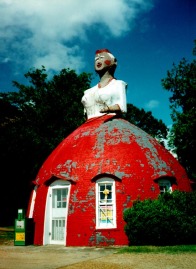In the book, Causes Won, Lost, and Forgotten, How Hollywood & Popular Art Shape What we Know about the Civil War, Gary Gallagher devotes chapter 4 to the fine arts and the power of the image.[1] Civil War artists captured the battles and their heroes in the style of realism to aid in remembering the Lost Cause. Since ancient times, the skills of the artist have captured epic moments of the past on a grand scale. Art documents the events worth remembering or sometimes forgetting in history.
During the nineteenth century, the cyclorama became a popular media to record grand events, especially battles. The Battle of Gettysburg painted by the French Artist Paul Philippotcaux became a famous featured cyclorama of the late 1800’s.[2] Philippoteaux made several sketches from the photographs he took of the battles. Over fifty Civil War battles were captured in the cyclorama, Paul created four original Gettysburg cycloramas, and only one survives intact at the Gettysburg Museum. Recently restored by European artists at the cost of $13 million dollars, the Gettysburg Foundation and Gettysburg National Military Park officials made plans to create a permanent edifice to house the epic chronicle of the historical battle.[3]Understanding the importance and value of an original piece is part of the aesthetic experience. Paintings actually created during the specific time period provide valuable resources to the past. However, Gallagher gives examples of contemporary artists like Mort Kunstler who continues to capture the same battles, the same people, the same style, it’s all very redundant, and very commercial to be sure. Gallagher notes that “Original Lost Cause art interpreted African Americans as carrying out their quotidian labors without challenging the Confederacy’s slave based social structure.”[4]
Maybe the time has come to look at a new cause from a new perspective from the other side of the fence.
Compare the art of contemporary African American female artist Kara Walker who also creates large room installations but with a different twist of memory. Born in 1969 and considered one of the most talented, and controversial artist of her generation. Her first art installation in New York was titled: Gone, A Historical Romance of Civil War as it Occurred Between the Dusky Thighs of one Young Negress and her Heart.[5] Her work is black and white; no middle ground. She uses the Victorian style of the cut out silhouette. Through these forms, she reveals her story of the American South before the Civil War. The form distinguishes the status of the character. Her compositions play off the stereotypes and life on the plantation “where masters and mistresses and slave men, women, and children enact a subverted version of the past in an attempt to reconfigure their status and representation.” Her installations forcefully pluralize our notion of a singular “history’, with “back stories and revisions that slash and burn through the pieties of patriotism and the glosses of color blindness.”[7]
In 1997, Kara Walker created a commissioned 85-foot-long cyclorama work for the Walker’s Group Exhibition, the monumental Slavery! Slavery! Presenting a GRAND and LIFELIKE Panoramic Journey into Picturesque Southern Slavery or “Life at ‘Ol’ Virginny’s Hole’ (sketches from Plantation Life). Her work remembers a different color of the past that can be difficult to look at directly. She questions, “How do you make representation of your world given what you’ve been given?” [8].
Click on her name to watch this clip for further insight into her work.
[1] Gary W. Gallagher, Lost, and Forgotten, How Hollywood & Popular art shape What we Know about the Civil War (Chapel Hill:The University of North Carolina, 2008) 161-179.
[2] Diana Loski, “The Cyclorama: Art for the Masses.” The Gettysburg Expression, November, 2011,1, Accessed July 3, 2012, http://www.thegettysburgexperience.net/past_issue_headlines/2011/august2011/cyclorama.html
[3] Loski, 1
[4] Gallagher, 181
[5] Ian Berry; Darby English; Patterson; MarkReinhardt; Vivian “Beyond the Controversy Kara Walker: Narratives of a Negress” Kara Walker Review Johanna Branson The Women’s Review of Books, Vol. 21, No. 4 (Jan., 2004), Published by: Old City Publishing, Inc.1URL: http://www.jstor.org/stable/4024363 Accessed: 02/07/2012 01:16
[6] Barbara Kruger, “Arts & Entertainers, Kara Walker,” Time Specials:The Time 100, May 03, 2007.21,accrssed July 3, 2012 http://www.time.com/time/specials/2007/time100/article/0,28804,1595326_1595332_1616818,00.html #ixzz1zbeTPV75
[7] Kruger, 21.
[8] Kara Walker, “The Art of Kara Walker :A Companion to the Exhibition — My Complement, My Enemy, My Oppressor, My Love”,WalkerArtCenter, accessed July3, 2012, http://learn.walkerart.org/karawalker




